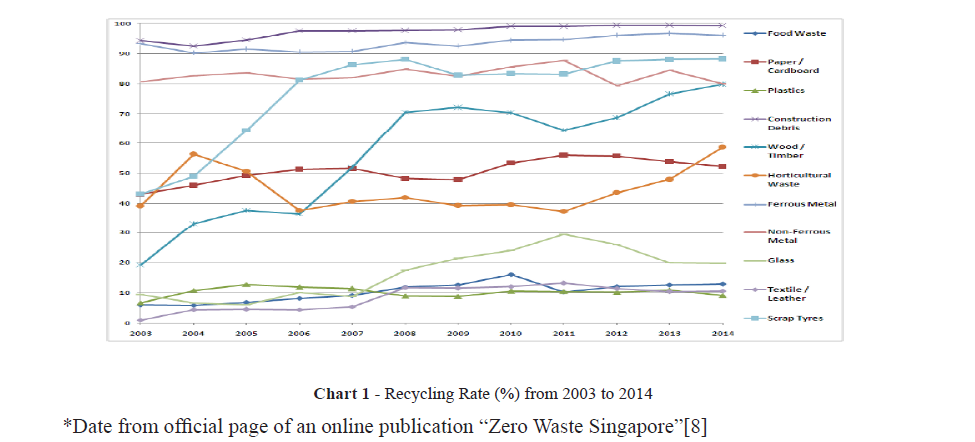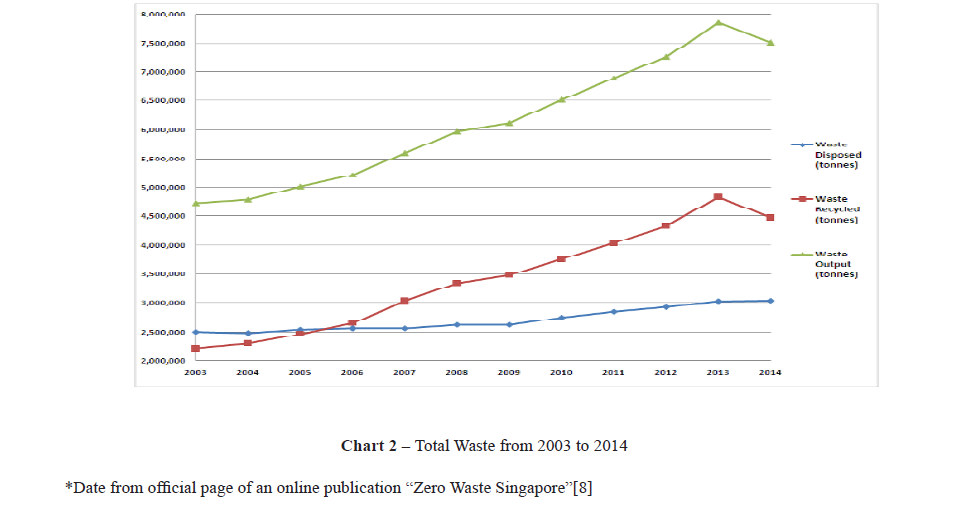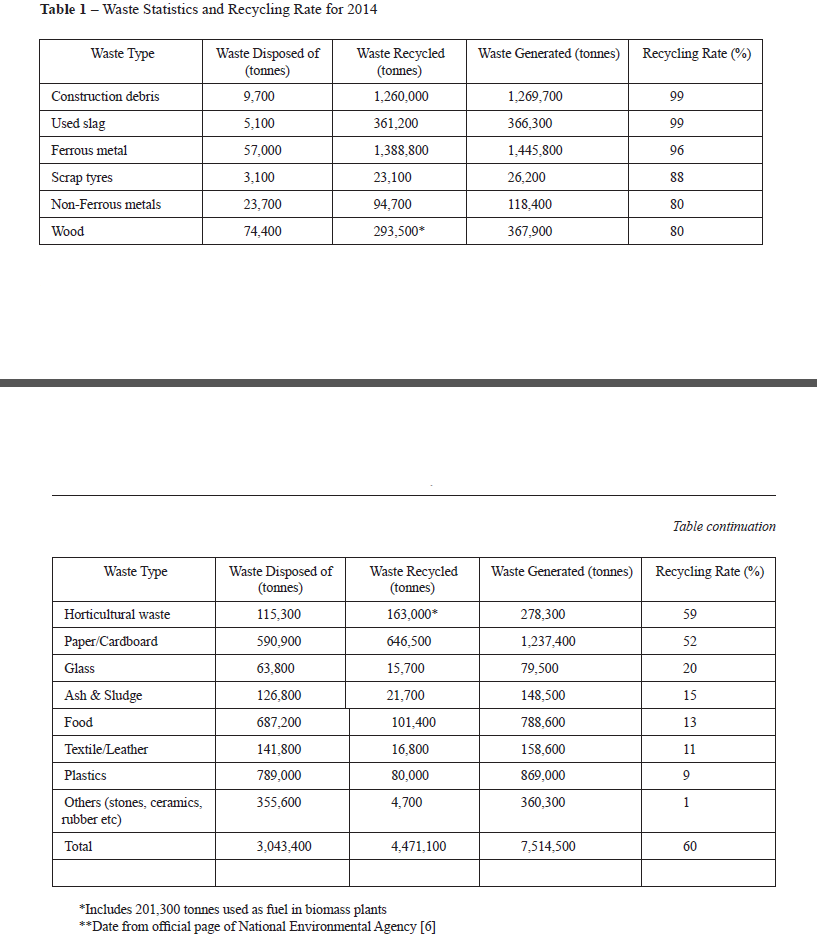An urgent task now facing civilization is not only problems of economic and social development, but also the problem of ecological security in the world. On this occasion, at the end of the last century, has appeared the concept of sustainable development which includes economic, social and environmental aspects.
According to the report of the Brundland Comission “Our Common Future” the main objective of sustainable development is preservation or augmentation of wealth (natural, created labor rights as well as human resources and social achievements) for future generations and at the same time minimizing the consumption of non-renewable resources and exclusion overload ecosystems [1, p.16].
Now all countries over the world added to their government plans and strategies the concept of sustainable development and one of those countries that are in such a short time was able to develop economically sustainable herewith providing their people with clean drinking water, eco-friendly buildings, green and blue spaces is Singapore.
Singapore is one of the world›s leading commercial hubs, with the fourth-biggest financial centre and one of the five busiest ports. Singapore has developed rapidly from a third world to a first world country in five decades by prioritizing the twin goals of developing a competitive economy and pursuing environmental sustainability. Both are important in order to attract investors and enhance quality of life. As an island city-state, it has its own share of existing environmental challenges, particularly with air quality levels, in part due to regional transboundary haze.
Currently, Singapore the largest trading power in the region. The country has a high level of urbanization: approximately 5.47 million. people ( June 2014) [2] living in the area of just over 700 square kilometers. The area is gradually increasing due to land reclamation program, in operation since 1960 and, according to the plans, could grow by another 100 square kilometers to 2030.
In Singapore, a little space, water resources are limited; there are practically no natural resources. Imports almost everything from consumer goods to products and materials for industry and construction, including water, the country receives from neighboring Malaysia. When evaluating any project, the government of Singapore focuses on issues of sustainable development, renewable energy and efficient resource use.
Nowadays for sustainable development policies in Singapore adjust such institutional establishments as Ministry of Trade and Industry, Singapore Economic Development Board and Maritime and Port Authority of Singapore. There are exist sustainability policies, more precisely strategies like:
Sustainable Blueprint
In 2008, an Inter-Ministerial Committee on Sustainable Development (IMCSD) was set up to formulate a national strategy for Singapore’s sustainable development in the context of emerging domestic and global challenges. The Committee developed the Sustainable Blueprint in close cooperation with members of the public, leaders of non-governmental organizations and businesses, members from academia, media editors, and Mayors.
The Sustainable Blueprint contains the strategies and initiatives that are needed for Singapore to achieve both economic growth and a good living environment over the next two decades. The vision is to make Singapore a liveable and lively city state, one that Singaporeans love and proud to call their home. To reach this vision, a four-pronged strategy was set up, consisting of the following: boosting the resource efficiency, enhancing urban environment, building capabilities, and fostering community action.
Maritime Singapore Green Initiative
The Maritime Singapore Green Initiative seeks to reduce the environmental impact of shipping and related activities and to promote clean and green shipping in Singapore. It is a comprehensive initiative comprising three programmes Green Ship Programme, Green Port Programme and Green Technology Programme.
Masterplan 2008 – Where my future is The Master Plan, published by the Urban Redevelopment Authority, is the statutory land use plan which guides Singapore’s development in the medium term over the next 10 to 15 years. It is reviewed every five years and translates the broad long-term strategies of the Concept Plan into detailed plans to guide development. The Master Plan shows the permissible land use and density for developments in Singapore [3].
Moreover, Singapore has set targets in the areas of built environment, clean energy, IT, public safety and urban mobility to develop Urban Solutions for a Singapore which is smart, safe and sustainable.
To achieve this, public agencies and partners from the private sector co-developed innovative Urban Solutions. Within this initiative, 6 Living Labs across focus areas have been developed. One focus area is the “Electric Vehicles and Intelligent Transport Systems”. A multi-agency Electric Vehicles (EV) Taskforce led by Energy Market Authority (EMA), Land Transport Authority (LTA) and Economic Development Board (EDB) invested S$20 million to study the robustness, costeffectiveness and environmental impact of electricpowered vehicles in a tropical environment from 2010 [3].
Among these policies the most important and popular is Sustainable Blueprint. According to this strategy sustainable development for Singapore is:
- Efficient: Development occurs with less resources and waste.
- Clean: Development occurs without polluting the environment.
- Green: Development preserves greenery, waterways, and natural heritage.
Keeping true to Singaporean tradition in policy making, the Blueprint follows a ‘Singapore Way’ and upholds the principles of:
Long-Term, Integrated Planning: “We will align our policies from energy to transport to industry and urban planning and take a long-term and complete view of our needs and circumstances. Indeed, this ability to plan and act in unison towards the overall goal of sustainable growth is one of our key strengths”.
Pragmatic and Cost Effective Manner: “We have to secure our twin goals of promoting economic growth and a good environment in the most cost-effective way. We must constantly ask ourselves “what works”, and we will not shy away from long-term measures that are necessary, even if they entail short-term costs. But we will pace the implementation of these measures and provide help to temper and soften the short-term costs for businesses and individuals”.
Flexibility: “The challenges to maintain economic growth and a good environment will span many decades. We therefore have to remain nimble, and adjust flexibly to changes in technology and in the global environment. We will invest in building our capabilities today to give us more options to better respond to the challenges of tomorrow” [4, p.61].
One of the most important parts of sustainable development and “Singaporean Way” is a “Waste towards Zero Landfill”, which means a reduction in solid waste. Supporting to this strategy their goal is improving their recycling rate from 56% in 2008 to 65% in 2020 and 70% in 2030.
First solid waste and wastewater treatment are discussed in Chapter 21 of Agenda XXI century, which recognized that “environmentally sound disposal of waste is one of the environmental issues that are most important to maintain the quality of the global environment ...” (Agenda XXI century, para 21.1). In accordance with Chapter 21 used in the definition of solid waste includes all household waste and non-hazardous waste such as industrial waste and public institutions, and street debris and, in some countries highlight the human body. Hazardous waste is often mixed with other waste, which creates special problems in terms of their removal.
Chapter 21 was considered by the Commission on Sustainable Development at its second, sixth and seventh sessions. In accordance with the multi-year program of work of the Commission, this chapter also discussed at the eighth session in the context of “integrated planning and land use.” [5].
Among other East Asian countries Singapore has developed an integrated waste management system that collects and disposes of waste effectively. Before this Singapore’s growing population and booming economy have contributed to a 6-fold increase in the amount of solid waste disposed from 1,260 tonnes a day in 1970 to a peak of 8,338 tonnes a day in 2014 [6].
To address this potential problem, Singapore has set up an integrated solid waste management system in the past three decades that incorporates recycling, collection and disposal. Working hand in hand with key stakeholders in the private and government sectors as well as the general public, Singapore’s National Environment Agency (NEA) has formulated a range of strategies and programmes to achieve its objectives for curbing waste growth and supporting sustainable waste management [7].
Solid waste management in Singapore begins at homes and businesses. Prior to the collection of solid waste, recyclables are sorted and retrieved for processing to prolong the lifespans of recyclable materials. The solid waste that remains is then collected and sent to the various waste-to-energy plants for incineration. Incineration reduces the volume of solid waste by about 90% and produces steam that runs turbine-generators to generate electricity.
Singapore’s integrated solid waste management system focuses on two key thrusts – waste minimization and recycling, or simply the 3Rs (Reduce, Reuse, Recycle) [6].
3Rs means:
- Reduce by eliminating or minimizing the waste in the beginning.
- Reuse by using the waste several times in its original form or for another purpose.
- Recycle by sending the waste to be processed as a resource for new products [8].
In land-scarce Singapore, waste-to-energy (WTE) incineration plants offer the best technical solution by reducing waste volume efficiently to conserve landfill space. The 3Rs play a crucial role by preventing waste generation at its source and bringing along numerous benefits.
If to analyze the latest statistical data about recycling rate in Singapore, you can see that food waste, plastics, textile and glass wastes have a low rate compared to other categories like construction debris, non-ferrous metal, ferrous metal and scrap tyres.

Chart 1 Recycling Rate (%) from 2003 to 2014 *Date from official page of an online publication “Zero Waste Singapore”[8]
According to the Chart 1 recycling rate of construction debris, ferrous metal, food waste, plastics has grown gradually, however recycling rate of scrap tyres from 2004, glass from 2007, wood/timber from 2006 has grown rapidly and recycling rate of horticultural waste has decreased from 2004, paper/cardboard has a lowest rate in 2008-2009 years.

Chart 2 – Total Waste from 2003 to 2014
*Date from official page of an online publication “Zero Waste Singapore”[8]
As illustrated in the above Chart 2 the highest waste output is in 2013 – more than 7.5 million tonnes, this indicator was less than 5 million tonnes ten years ago (2003). The main causes of this increasing are economic growth, growth of population, development of infrastructure and production. As you can see in this chart in 2013 more than 60% (4.8 million tonnes) of waste output was recycled and other part was disposed (3million tonnes). Also amount of recycled waste is increasing every year and this is a good indicator for environment. Materials to be recycled are either brought to a collection center or picked up from the curbside, then sorted, cleaned, and reprocessed into new materials bound for manufacturing.
However, waste output and recycled waste indicators decreased in 2014. Full detailed figures of 2014 are shown in Table 1.
Table 1 – Waste Statistics and Recycling Rate for 2014

*Includes 201,300 tonnes used as fuel in biomass plants
**Date from official page of National Environmental Agency [6]
As shown in Table 1 in 2014 total recycled waste was 4,471,100 (4.5 million) tonnes and recycle rate was 60%. The most recyclable materials are construction debris (99%), used slag (99%), ferrous metal (96%), scrap tyres (88%), non-ferrous metal and wood (80%) and the less recyclable materials are stones, ceramics, rubber etc (1%), plastics (9%), textile/leather (11%), food (13%), ash and sludge (15%), glass (20%).
According to Sustainable Blueprint strategy their goal is improving their recycling rate from 56% in 2008 to 65% in 2020 and 70% 2030. From the Table 1 you can see that with this tempo they can achieve their goal.
In conclusion, during the last 20 years, the practical implementation of the concept of sustainable development in the world is receiving increasing attention. These questions focused on the UN Conference on Environment and Development (Rio de Janeiro, 1992). It was the international community adopted a policy document on the implementation of the concept of sustainable development. Issues of realization of this program (policy document) were devoted to the Special Session of the UN General Assembly (23-27 June 1997). Their programs of transition to sustainable development have many countries. Considerable attention is the practical implementation of the concept of sustainable development has recently been given many international organizations, primarily the UN and the World Bank.
But Singapore first starts their sustainable development policy in 1963, when Prime Minister Lee Kwan Yew planted the first tree that sowed the seeds to make Singapore a Garden City. He believed that “a blighted urban jungle of concrete destroys the human spirit” and that “we need the greenery of nature to lift our spirits [9, p.9]”. In the 1980s, they transformed the Singapore River from a heavily polluted passageway for boats to the beautiful urban water catchment area and vibrant destination that it is today.
After analyzing current dates of waste strategies, Singapore has seen an increase in recycling rate from 47% in 2003 to 60% in 2014. By reducing waste disposal compared to recycled waste at the incineration plants and landfill, Singapore is striving towards achieving its long-term goal of “Waste towards Zero Landfill”.
Today, Singapore is recognized as a livable and sustainable city. In 2011, a Siemens-Economist Intelligence Unit study ranked Singapore as Asia’s greenest city. The Singapore we know today did not come about by chance. It is the result of visionary leadership, careful, long-term planning and the hard work of their forefathers who created this place they call home. And I consider that their experience can serve as a model for other developing countries.
References
- Our Common Future // The World Commission on Environment and Development’s (the Brundtland Commission) – Oxford: Oxford University Press – 1987. – Р.16.
- The official page of Department of Singapore Statistics http://www.singstat.gov.sg/
- LOG4GREEN joint excellence for sustainable logistics. Singapore policies. http://www.log4green.eu/
- Canadian International Development Agency (CIDA). Indicators for How cities are monitoring and evaluating their success. – 2012. – page 61.
- Agenda XXI century // United Nations Conference on Environment & Development Rio de Janerio, Brazil, 3 to 14 June 1992, para 21.1
- The official page of National Environment Agency of Singapore. http://www.nea.gov.sg/
- Vincent Integrated thinking: solid waste management in Singapore // National Environment Agency – Singapore.
- Zero Waste Singapore, online publication http://www.zerowastesg.com/
- Our Our Environment. Our Future. Sustainable Singapore Blueprint 2015 // Ministry of the Environment and Water resources, Ministry of National Development. – 2014. – Р. 9.